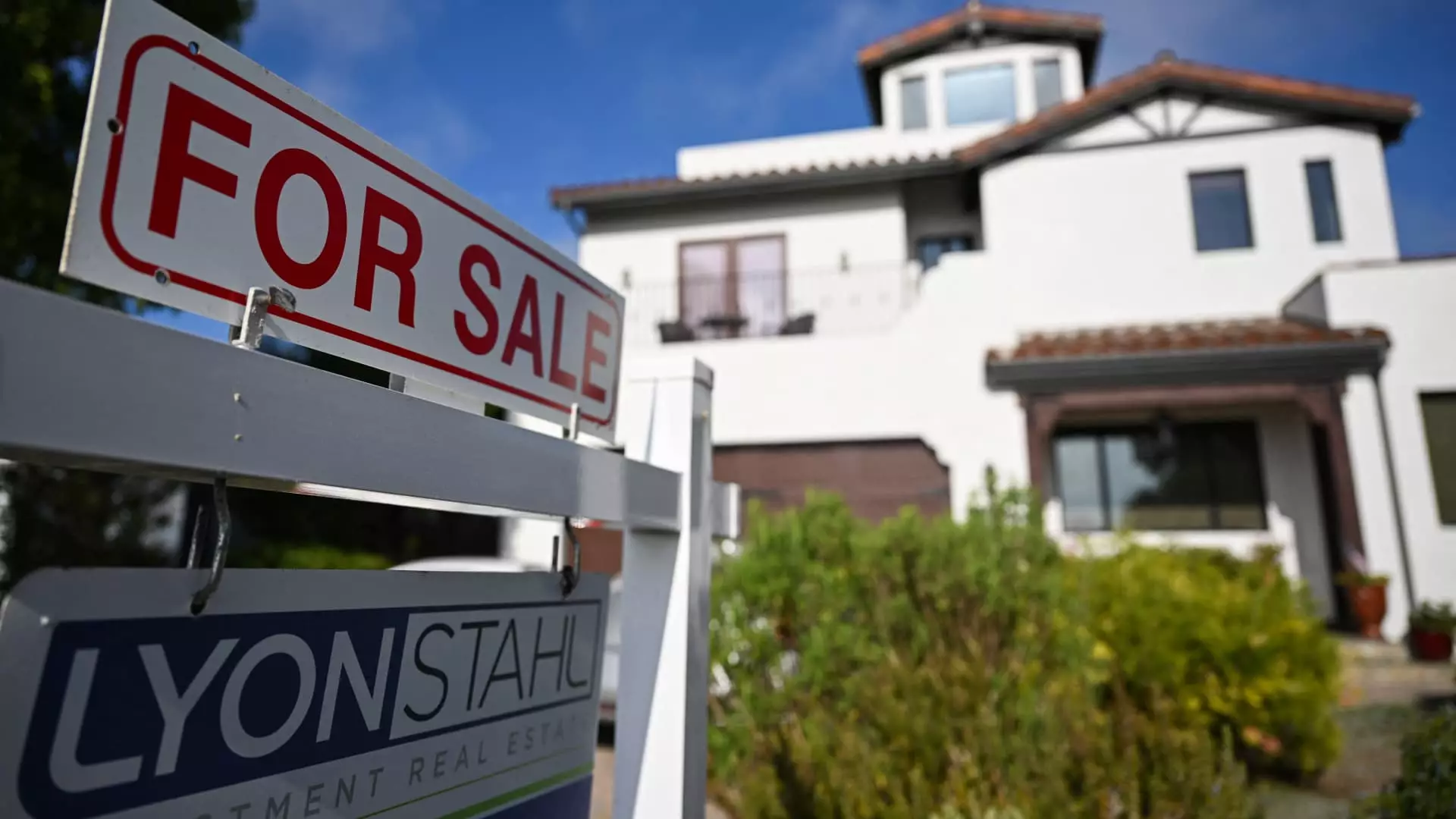In an unexpected twist, mortgage rates dipped sharply recently, following the Trump administration’s latest tariff announcements. This sudden decrease in the average rate for a 30-year fixed mortgage, which plummeted by 12 basis points to 6.63%, may seem promising at first glance. However, it highlights a much more complex web of economic challenges facing potential homebuyers today. The bond market, typically seen as a safe haven, is reacting to stock market tremors as investors pull out of equities, further complicating the notion of financial stability in real estate markets. The fluctuations in mortgage rates exhibit a tenuous connection to the unpredictability of geopolitical policies, prompting a re-evaluation of what homeownership means in today’s economy.
Housing Market Dynamics: Dove or Hawk?
As we embark upon the historically busy spring home-buying season, falling mortgage rates might initially seem like a silver lining for buyers. However, the stark reality is that the housing market remains alarmingly inaccessible for a vast segment of the population. Recent reports indicate that for the four weeks leading up to March 30, the average monthly payment for a typical U.S. homebuyer reached an unprecedented $2,802. This record-breaking figure is indicative of broader issues surrounding inflation and stagnant wages, which disproportionately affect working-class families. Sale prices rising by 3.4% year-over-year reveal an unsettling trend: The American dream of homeownership is rapidly slipping away from those who need it most.
The disparity between falling mortgage rates and soaring home prices creates a treacherous paradox for homebuyers striving to enter the market. Although mortgage rates are amongst the lowest seen since December, they are still more than twice as high as during the pandemic’s early days. This inconsistency exacerbates the crisis at hand, especially given that an estimated 70% of households—approximately 94 million—simply cannot afford a $400,000 home. The creases of financial strain reveal a systemic issue rooted in income stagnation and rising living costs. For many, this is not merely an unfortunate coincidence; it’s a manifestation of policies that have continued to sideline the working class.
Supply Shortages: A Basic Economic Conundrum
The current market volatility doesn’t solely stem from interest rates; it is also a function of supply and demand. While there is a growing supply of homes entering the market, the properties available are often at price points that remain out of reach for the majority of prospective buyers. This disconnection between supply and demand leads to homes being priced at levels that mirror luxury markets rather than being reflective of widespread affordability needs. With the estimated median home price edging toward $460,000 in 2025, predictions indicate that about 52.87 million households will only be able to stretch their budgets to afford homes priced around $200,000—a dismal forecast that highlights a growing inequity in housing accessibility.
A combination of chronic underbuilding since the Great Recession and the recent demographic shifts initiated by pandemic migration has culminated in a housing landscape that is unrecognizable from what it once was. Those who might hope to secure more affordable housing options find themselves thwarted by a market that is not prepared to cater to their needs. While voices like Matt Ferris, a Redfin agent, suggest that inventory may be surging, it still falls woefully short regarding affordability.
The Consequence of Economic Anxiety on Buyer Behavior
Adding layered complexity to this crisis is the palpable economic anxiety hanging over homebuyers. As highlighted by Danielle Hale, the chief economist at Realtor.com, potential buyers are exhibiting a slower response due to the high costs of purchasing a home intertwined with general economic concerns—getting comfortable with the notion of a “balanced market” may be something many will be forced to reckon with. After all, it’s difficult to feel empowered in the housing market when significantly high prices force lifestyle sacrifices, or when the specter of job lay-offs looms over personal finances.
Cities such as Jacksonville and Miami have recorded staggering declines in pending sales, registering reductions of 15.1% and 13.7%, respectively. These figures speak volumes about the diminishing confidence among buyers. A slower market and increasing inventory may appear beneficial in an ideal world, but in reality, they often exacerbate the struggle for average Americans grappling with the harsh realities of economic hardship.
As we navigate through 2025, the question remains whether the current landscape will permit an authentic opportunity for aspiring homeowners to reclaim the American dream. The weariness within the real estate market begs for a reworking of how policies are crafted around housing and economic equity, ensuring that accessibility, not exclusivity, defines future possibilities for millions dreaming of stable homeownership.

